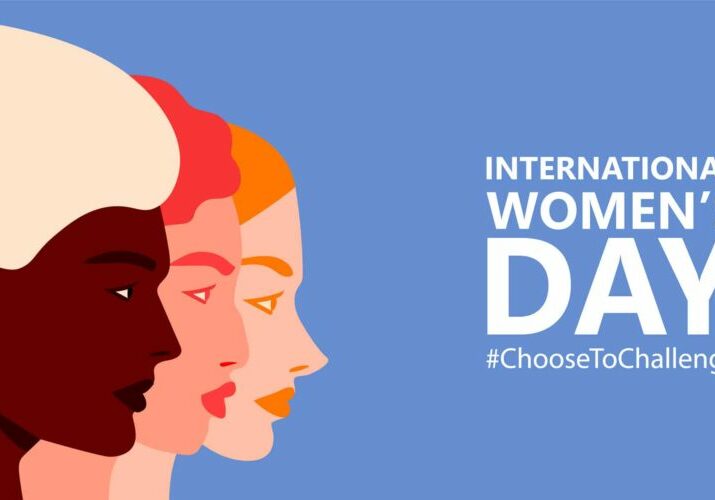By Dana Lakins, Joyce Kilmer School, Mercer County, NJEA Women in Education and Aida Wahba, Somerville High School, Somerset County, NJEA Women in Education
This year’s theme for International Women’s Day 2021 (IWD) is Choose to Challenge. The IWD website states, it is clear that a world without challenges is a world without change. #ChooseToChallenge empowers all humanity to recognize that “a challenged world is an alert world”. We will acknowledge women’s achievements. We will make people aware of gender inequality. We recognize the unfortunate bias against women. Through #ChooseToChallenge, the goal is to elevate awareness to ensure issues important to women around the world continue to be at the forefront and show our unwavering support. We will let everyone know we recognize the challenges women face globally and do something about it. We will not be shy about calling out unfair, unequal, unjust treatment of women. We will proudly proclaim the achievements of women everywhere.
#ChooseToChallenge highlights the pact women around the world share to make sure all women are supported as they maneuver through life’s day to day obstacles. #ChooseToChallenge further emphasizes the unification of women around the globe and shows “how their individual actions help inequality”. You can join the challenge by raising your hand in solidarity to show your support for equality. Click here to submit your IWD image.
History of International Women’s Day
Since the early 1900s and the rise of radical ideologies, International Women’s Day has been observed.
| 1908 | Women advocated better pay, less hours and voting rights by marching through NYC. |
| 1910 | Clara Vetkin proposed International Women’s Day and got unanimous approval at the International Conference of Working Women. |
| 1914 | Women across Europe held rallies to campaign against World War I and to express women solidarity. International Women’s Day was agreed to be held nationally on March 8th. |
| 1975 | International Women’s Day was celebrated for the first time by the United Nations. |
| 2011 | In March, Women’s History Month was proclaimed to mark the “extraordinary accomplishments of women” in shaping the country’s history. |
| 2021 | Although we have had monumental improvements- Female Vice-President, female astronauts and prime ministers, women are still not paid equally to male counterparts, women are still not present in equal numbers in businesses and politics and the violence against them is still worse than men. |
The Colors of International Women’s Day
The unification of the colors purple, green and white are the symbol of International Women’s Day. Purple, often associated with royalty, signifies justice and dignity. The color of nature and the natural world- green means hope. White, represents purity. This vibrant trio was adopted in 1908 by the Women’s Social and Political Union (WSPU) that was founded in Manchester, England October 1903 (Britannica). This coalition of strong women wore their colors proudly as they demonstrated, marched, and engaged in hunger strikes all in the name of equality for women until 1917. The flags, banners, badges, buttons, and tea sets adorned with the color trio and the initials, WSPU, were designed by the founder’s daughter Sylvia Pankhurst (irishwomenshistory.blogspot.com).
 Original enameled WSPU badge worthpoint.com
Original enameled WSPU badge worthpoint.com
Votes for Women banner Grandmotherschoice.blogspot.com
Become part of the worldwide platform of women united to raise awareness of issues important to WOMEN. To join IWD, learn more about International Women’s Day or to get ideas for lessons for International Women’s Day, March 8th, search the resources below:
Join IWD to unlock a plethora of information
Lesson Plans and Teacher Resources:
- Teacher Resources to bring Global connection, conversation and compassion
- PBS Free 6-12 Lesson plans and activities for IWD
- Free 9-12 Lesson Plan to Celebrate International Women’s Day
- Two Free K-8 Lesson Plans to Celebrate International Women’s Day
- Use these Steps to run International Women’s Day Activities
- United Nations Events for International Women’s Day

